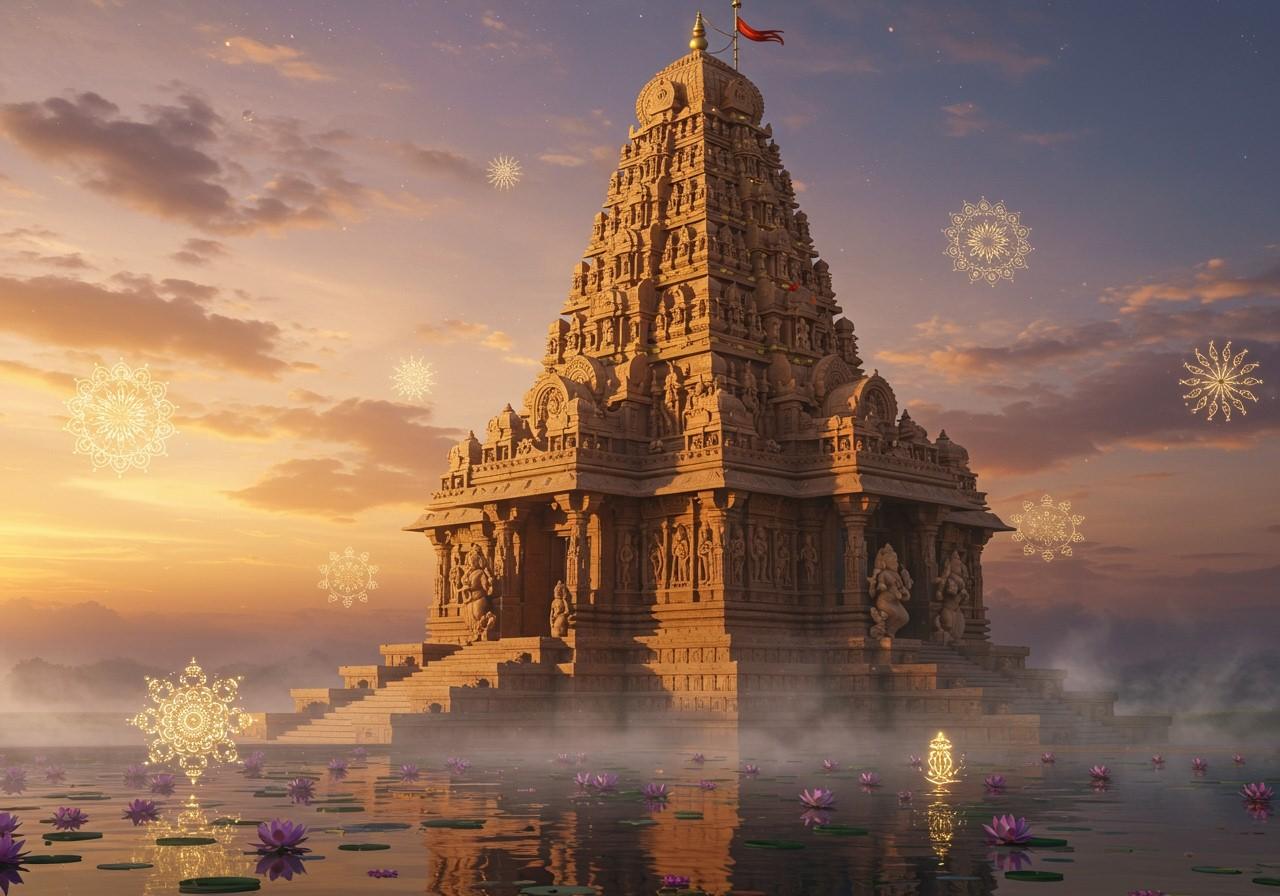
Embark on a captivating exploration of the Teli Ka Mandir, an architectural marvel nestled within the historic Gwalior Fort in Madhya Pradesh, India. Dating back to the 8th-9th centuries CE, this ancient temple stands as a testament to India’s rich cultural and religious heritage. Teli Ka Mandir’s unique blend of architectural styles, with its distinctive barrel-shaped tower, sets it apart as a must-see destination.
Unraveling the History and Legacy of Teli Ka Mandir
The Teli Ka Mandir, also known as the Oilman’s Temple, is steeped in history and shrouded in intriguing theories regarding its name. One theory suggests its patronage by oil merchants (“Teli” in Hindi), while another points to a nearby oil press. Built during the reign of the Pratihara dynasty, the temple has witnessed the rise and fall of empires, from the Tomars to the Mughals, each leaving their mark on this enduring structure. Dedicated to deities including Shiva, Vishnu, and the Matrikas, the temple has served as a significant religious and cultural center for centuries, bearing witness to the ebb and flow of history.
Architectural Features: A Confluence of Styles
The Teli Ka Mandir boasts a unique architectural design that distinguishes it from other Hindu temples. Its most striking feature is the 25-meter tall, barrel-shaped masonry tower, known as a gopuram, a characteristic more commonly associated with South Indian temples. This Dravidian influence is further emphasized by the rectangular sanctum, an atypical design for North Indian temples. The fusion of Dravidian and North Indian styles creates a remarkable architectural hybrid, showcasing the ingenuity of ancient Indian artisans. Intricate carvings adorn the exterior walls, depicting deities, floral motifs, and mythical creatures, adding to the temple’s aesthetic appeal.
Cultural Significance and Preservation Efforts
Teli Ka Mandir holds immense cultural significance, representing a blend of religious traditions with both Hindu and Jain iconography present. Its architectural influence on later temples in the region is evident, solidifying its place within the broader narrative of Indian temple architecture. The Archaeological Survey of India (ASI) plays a vital role in preserving this historical gem. Ongoing restoration efforts aim to mitigate the effects of weathering, pollution, and past damage, particularly from the 13th-century invasions by the Delhi Sultanate, ensuring that this architectural marvel endures for future generations.
Enhancing Your Visit to Teli Ka Mandir
Planning your visit during cooler months allows for a more comfortable exploration of the Gwalior Fort complex. The temple’s surroundings offer lush gardens and scenic vistas, enhancing the overall experience. Combine your visit with nearby attractions like the Sas-Bahu Temple to gain a deeper understanding of the region’s rich history and cultural landscape. For those seeking a deeper spiritual connection, consider acquiring sacred items from Poojn.in. Enhance your devotion with the Pure Brass Maa Kali Murti (9″ × 6.5″), a perfect offering for your home shrine, or the Tela Lakshmi Murti in Ashtadhatu brass, reflecting the temple’s dedication to various deities.
-
Maa Kali Murti: This exquisite murti is available at a significant discount of 58%, priced at ₹3,169 (original price ₹7,549). Crafted from high-quality brass, this 9″ x 6.5″ murti weighs 1.8 kg and requires no assembly, ensuring convenient portability and immediate use.
-
Tela Lakshmi Murti: This intricately designed Ashtadhatu brass murti, measuring 15 cm x 6 cm x 12.5 cm, embodies the same devotional spirit found at Teli Ka Mandir, making it a cherished addition to your spiritual practice.
Bulk ordering options are available for wholesale customers. Explore the complete collection of authentic puja supplies at Poojn.in or connect on WhatsApp at +91 7908548235.
Teli Ka Mandir: A Timeless Legacy
Teli Ka Mandir stands as a timeless symbol of India’s diverse architectural heritage and rich cultural tapestry. As you explore its ancient halls, let the echoes of history resonate within you, inspiring a deeper appreciation for the ingenuity of ancient artisans and the enduring spirit of religious harmony. Carry this inspiration forward, continuing to explore the treasures of India’s past and the traditions that shape our present and future.
Govindaraja Temple: History, Architecture, and Significance
Hindu Temple Architecture: Significance and Symbolism


